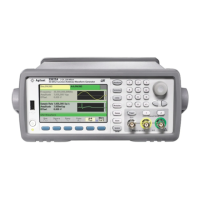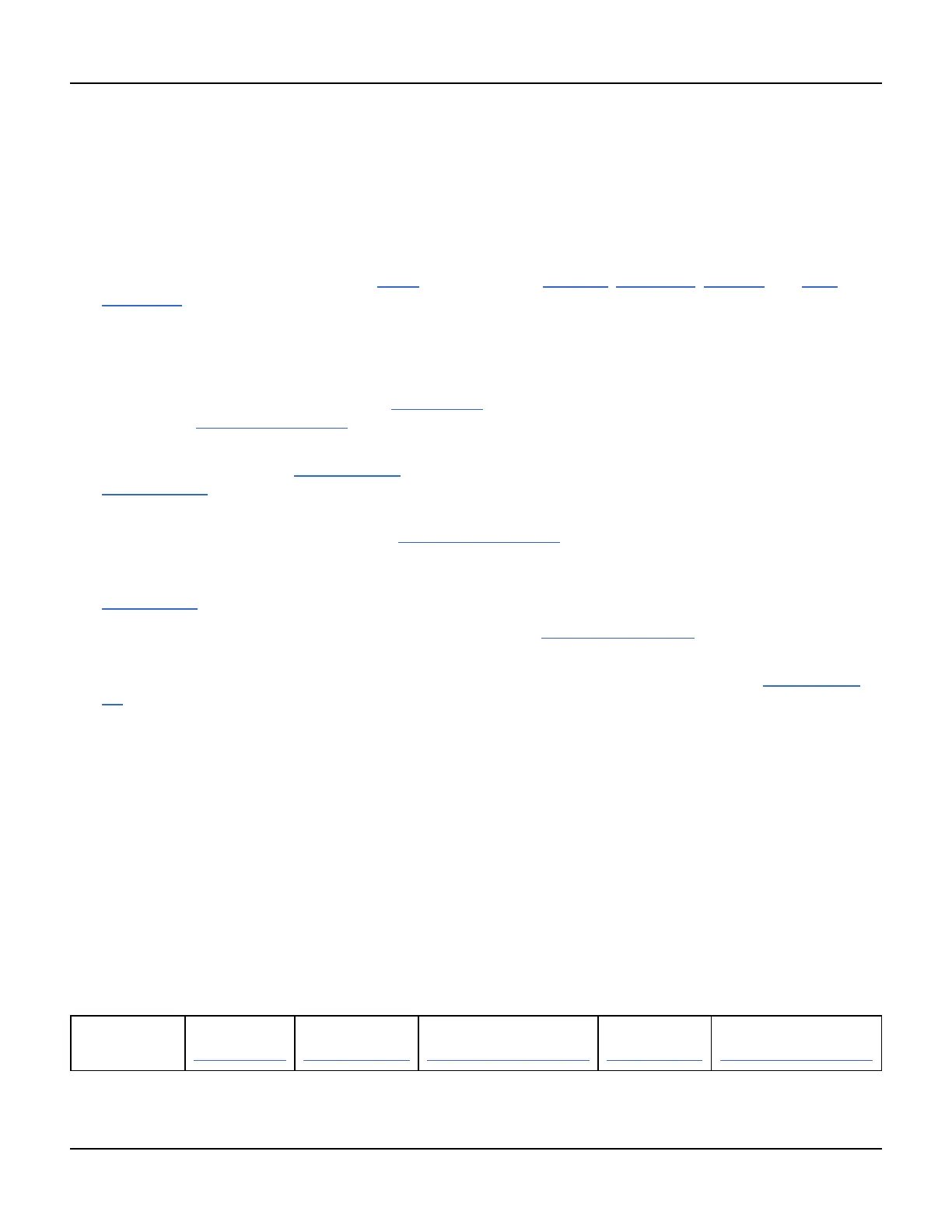BURSt Subsystem
BURSt Subsystem
This section describes the BURSt subsystem.
Example
This summarizes the steps required to generate a burst.
1. Configure the burst waveform: Use APPLy or the equivalent FUNCtion, FREQuency, VOLTage, and VOLT-
age:OFFSet commands to select the waveform's function, frequency, amplitude, and offset. You can select a sine,
square, triangle, ramp, pulse, PRBS, or arbitrary waveform (noise is allowed only in the gated burst mode and DC is
not allowed). For internally-triggered bursts, the minimum frequency is 2.001 mHz. For sine and square wave-
forms, frequencies above 6 MHz are allowed only with an "infinite" burst count.
2. Select the "triggered" or "gated" burst mode: Select the triggered burst mode (called "N Cycle" on the front
panel) or external gated burst mode using BURSt:MODE. If you are using gated mode, specify true-high or true-
low logic with BURSt:GATE:POLarity.
3. Set the burst count: Set the burst count (number of cycles per burst) to any value between 1 and 100,000,000
cycles (or infinite) using the BURSt:NCYCles command. Used in the triggered burst mode only. In PRBS,
BURSt:NCYCles sets the number of bits of PRBS. Each burst starts at the sequence start.
4. Set the burst period: Set the burst period (the interval at which internally-triggered bursts are generated) to
any value from 1 μs to 8000 seconds using BURSt:INTernal:PERiod. Used only in the triggered burst mode with an
internal trigger source.
5. Set the burst starting phase: Set the starting phase of the burst from -360 to +360 degrees using
BURSt:PHASe.
6. Select the trigger source: Select the trigger source using the TRIGger[1|2]:SOURce command. Used in the trig-
gered burst mode only.
7. Enable the burst mode: After configuring the other burst parameters, enable the burst mode (BURSt:STATe
ON).
Burst Modes
There are two burst modes, described below. The instrument enables one burst mode at a time.
l Triggered Burst Mode (default): The instrument outputs a waveform for a number of cycles (burst count)
each time a trigger is received. After outputting the specified number of cycles, the instrument stops and waits for
the next trigger. You can configure the instrument to use an internal trigger to initiate the burst or you can pro-
vide an external trigger by pressing the front-panel Trigger key, by applying a trigger signal to the rear-panel Ext
Trig connector, or by sending a software trigger command from the remote interface.
l External Gated Burst Mode: The instrument output is either "on" or "off" based on the level of the external sig-
nal applied to the rear-panel Ext Trig connector. When this signal is true, the instrument outputs a continuous
waveform. When this signal goes false, the current waveform cycle is completed and then the instrument stops
while remaining at the voltage corresponding to the starting burst phase of the waveform.
The following table shows which modes are associated with which burst features.
Burst Mode
BURSt:MODE
Burst Count
BURSt:NCYCles
Burst Period
BURSt:INTernal:PERiod
Burst Phase
BURSt:PHASe
Trigger Source
TRIGger[1|2]:SOURce
176 Agilent 33500 Series Operating and Service Guide

